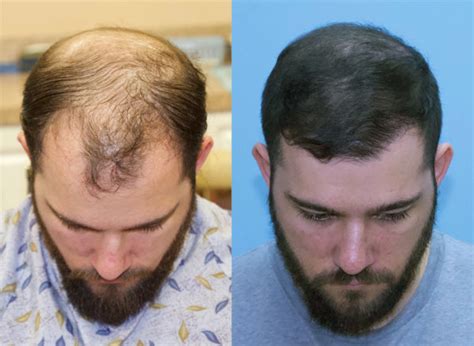Non-Surgical Hair Replacement: Revolutionary Solutions for Hair Loss
Hair loss, a common concern affecting millions worldwide, can significantly impact self-esteem and overall well-being. However, advancements in non-surgical hair replacement techniques have revolutionized the landscape of hair restoration, providing numerous options to restore your crowning glory without the need for invasive procedures.

Understanding Non-Surgical Hair Replacement
Non-surgical hair replacement encompasses a range of techniques that aim to enhance or replace lost hair without surgical intervention. These techniques involve using artificial hair fibers, prosthetics, or natural hair grafts to create the illusion of fuller, thicker hair.
Key Benefits of Non-Surgical Hair Replacement:
- No invasive surgery or scarring
- Immediate results
- Customizable to suit individual needs and preferences
- Non-permanent, allowing for flexibility and adjustability
Exploring the World of Non-Surgical Hair Replacement
With over 5,000 non-surgical hair replacement options available, navigating the myriad of choices can be daunting. To assist you in making an informed decision, let’s delve into the most prevalent techniques:
1. Hair Toppers and Wigs:
Hair toppers and wigs are pre-made hairpieces that can be attached to the user’s existing hair or worn over the entire head. They come in various styles, colors, and densities to match your natural hair.
2. Hair Extensions:
Hair extensions involve adding artificial or natural hair strands to existing hair to increase length, volume, or color. They can be attached using various methods, such as clip-ins, tape-ins, or fusion techniques.
3. Scalp Micropigmentation (SMP):
SMP is a tattooing technique that creates the appearance of hair follicles on the scalp, giving the illusion of a thicker hair density. It’s particularly effective for individuals with thinning hair or receding hairlines.
4. Non-Surgical Hair Replacement Systems:
These systems combine hair fibers or hair prosthetics with a customized base that conforms to the user’s scalp. They are typically semi-permanent and require regular maintenance.
5. Platelet-Rich Plasma (PRP) Therapy:
PRP involves injecting concentrated growth factors from the user’s own blood into the scalp to stimulate hair growth. It’s a non-invasive treatment that can potentially improve hair thickness and density.
Statistics and Market Growth
According to the American Hair Loss Association, approximately 50% of men and 25% of women will experience significant hair loss by the age of 50. The global non-surgical hair replacement market is estimated to reach $10.2 billion by 2027, highlighting the increasing demand for these solutions.
Impact on Self-Esteem and Quality of Life
Non-surgical hair replacement has a profound impact on individuals’ self-esteem and overall well-being. The ability to restore or enhance their hair can provide a sense of renewed confidence, boost self-image, and enhance their quality of life.
Questions to Ask When Considering Non-Surgical Hair Replacement
Before embarking on any hair replacement journey, it’s crucial to ask yourself the following questions:
- What are my hair loss concerns and goals?
- Which techniques align with my needs and preferences?
- What are the costs and maintenance requirements associated with each option?
- How will non-surgical hair replacement impact my lifestyle and daily routine?
Seeking Professional Guidance
To ensure optimal results and avoid potential risks, it’s essential to seek professional guidance from a certified hair replacement specialist or dermatologist. These experts can assess your individual needs, recommend suitable options, and provide ongoing support throughout your hair restoration journey.
Conclusion
Non-surgical hair replacement has become an invaluable tool for individuals seeking to regain their confidence and improve their appearance. With a plethora of options available, from hair toppers to scalp micropigmentation, there’s a suitable solution for every hair loss concern. By embracing these non-invasive and customizable techniques, you can restore your crowning glory and embark on a transformative journey towards renewed self-esteem and well-being.
Table 1: Types of Non-Surgical Hair Replacement
| Type | Description |
|---|---|
| Hair Toppers | Pre-made hairpieces attached to existing hair |
| Wigs | Full or partial hairpieces worn over the entire head |
| Hair Extensions | Artificial or natural hair strands added to existing hair |
| Scalp Micropigmentation | Tattooing technique creating the appearance of hair follicles |
| Non-Surgical Hair Replacement Systems | Customized base with hair fibers or prosthetics |
Table 2: Benefits of Non-Surgical Hair Replacement
| Benefit | Explanation |
|---|---|
| No invasive surgery | Avoids scarring and potential complications |
| Immediate results | Provides instant hair enhancements |
| Customizable | Tailored to individual needs and preferences |
| Non-permanent | Allows for flexibility and easy removal |
Table 3: Cost and Maintenance of Non-Surgical Hair Replacement Options
| Option | Cost | Maintenance |
|---|---|---|
| Hair Toppers | $500-$5,000 | Regular styling and cleaning |
| Wigs | $2,000-$10,000 | Professional care and occasional cleaning |
| Hair Extensions | $500-$2,000 per application | Requires touch-ups and regular maintenance |
| Scalp Micropigmentation | $500-$2,500 | Fades over time, requiring periodic touch-ups |
| Non-Surgical Hair Replacement Systems | $3,000-$10,000 | Regular maintenance and cleaning |
Table 4: Non-Surgical Hair Replacement for Specific Concerns
| Concern | Suitable Options |
|---|---|
| Thinning Hair | Hair Toppers, Hair Extensions, Non-Surgical Hair Replacement Systems |
| Receding Hairline | Scalp Micropigmentation, Non-Surgical Hair Replacement Systems |
| Alopecia | Wigs, Non-Surgical Hair Replacement Systems |
| Hair Loss Due to Chemotherapy | Hair Toppers, Wigs, Non-Surgical Hair Replacement Systems |
